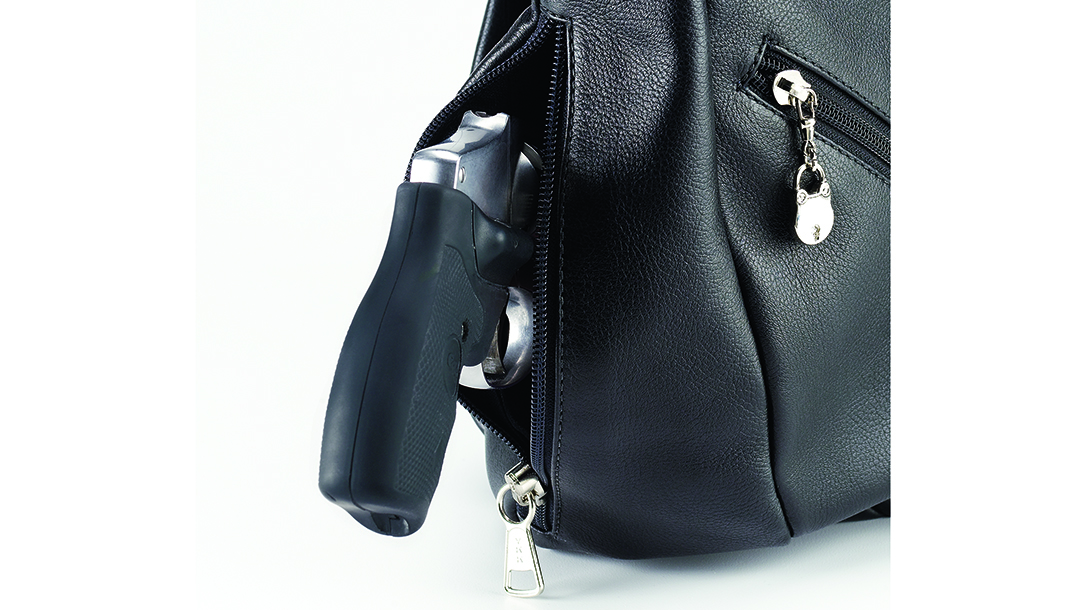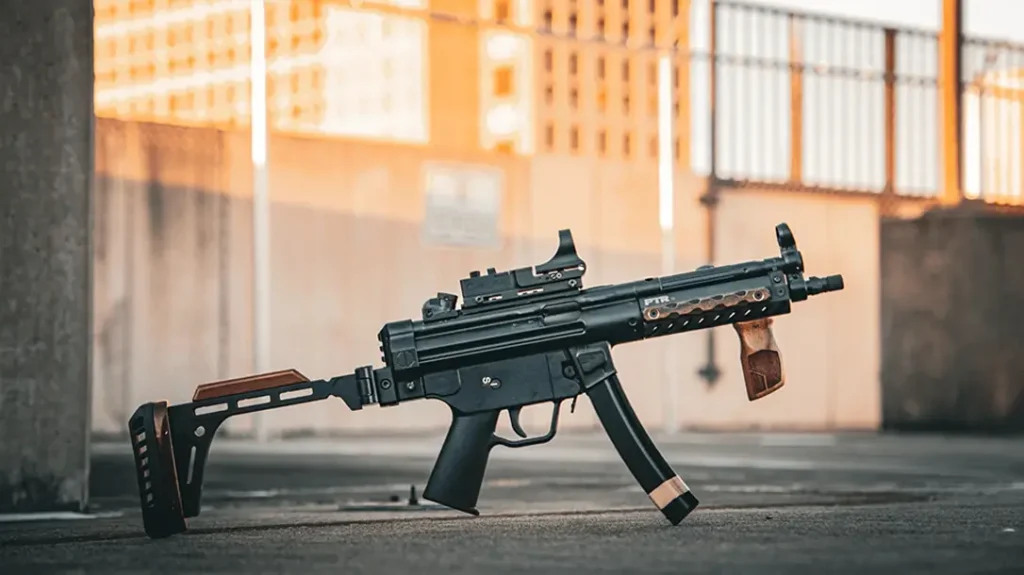I knew that student was going to be trouble the moment he walked into my classroom. A few years ago I accepted a position as an adjunct instructor at a local, inner-city business school. Daytime classes were okay, but night class students were a different story, and this semester was no exception. At the beginning of the first class, I always introduce myself, then tell the students a little bit about my background, including my NRA instructor status.
Concealed Carry Purse Considerations
As the weeks went by, I had nothing but trouble with this student. A large man, he was consistently late for class, would not follow instructions, was disorderly and left each class early. Then it happened. After I’d prompted him for the hundredth time to sit quietly and do his work, he threatened me. When class was over, he followed me to my car. I stopped, spun around, put my hand on the bulge protruding from my concealed-carry purse and said in a very firm voice, “You don’t want to do this!” Thankfully, the student slithered away into the night, never to be seen again.
Responsibility
National statistics show that women are taking more responsibility for their own defense. According to the NRA, the number of concealed-carry handgun permits has soared in recent years, and is now up to a whopping 19 million. Now guess which sex outpaced the other in permit holders? Women! USA Carry and the National Shooting Sports Foundation (NSSF) report that, in early 2020, 40 percent of first-time gun buyers were women. And according to the National Carry Academy (NCA), concealed-carry permits obtained last year through NCA jumped 120 percent, with women accounting for half the number issued, compared with just a third in previous years.
Advertisement — Continue Reading Below
“When a woman makes the choice to carry a concealed firearm, she has many decisions to make,” says Robyn Sandoval, executive director of A Girl & A Gun. “First, she must decide what firearm is best for her based on caliber, size and features. Then she must decide how she is going to carry it, either on-body or off-body.
“The primary benefit of carrying in a handbag is that this method tends to be a more universal option for different body types and pistol brands. If a woman lives in a colder climate where she may wear layers, off-body carry may give her faster access to her firearm. It is often more comfortable than on-body carry and is a viable option if her wardrobe choices would cause her to print or limit her access to the firearm.”

Advertisement — Continue Reading Below
If you’re thinking about purchasing a concealed-carry handbag, ask yourself the following questions to help make the right decision.
Would children have access to my CC handbag?
“If you have young children, train them to avoid the handbag with firm commands such as ‘No! Do not touch! or ‘Not a toy,’” says Beth Alcazar, associate editor at the United States Concealed Carry Association (USCCA). “Be sure to set up those boundaries in your home, and make sure your kids understand that mom’s purse is off limits. If you see that’s not working, keep the CCW handbag in a location where the kids can’t get to it, such as in a locked cabinet, or atop a tall dresser.” Alcazar also suggests purchasing a CCW handbag that has a locking device.
Do I have time for training?
“It is important that any person who chooses to carry concealed receives training and practices regularly with her carry method,” says Sandoval. “When holstering the handgun into a concealed-carry bag, a woman must be extremely careful to always follow the four rules of gun safety, and pay particular attention that her trigger finger is indexed along the frame of the handgun and that the muzzle never covers any part of herself or other people.”
Advertisement — Continue Reading Below
Sandoval suggests dry-firing for a few minutes every day. “You want to use your support hand to stabilize the bag while simultaneously drawing the handgun with your strong hand, and then presenting the pistol with a two-handed grip,” says Sandoval.
Do I have the right holster?
Whether you’re carrying on- or off-body, a proper holster is a critical factor. Personally, I went through several holsters before I finally found one I like to hold my EDC Sig Sauer P320C. Look for handbags that include holsters made of sturdy stuff, such as leather, Kydex or the thick, padded material used to build Sticky Holsters. Also, choose a bag with a holster that comes with a good triggerguard, because you don’t want other items in your handbag to bump up against or get lodged near the trigger. Finally, the holster should have a full grip exposure so you can quickly get a secure grip at first draw.
Am I willing to wear a cross-body CC handbag?
“Wearing a cross-body handbag allows the wearer to position her holster in a similar place to an on-body draw, so it does not compromise her response or draw time,” notes Sandoval. “Cross-body also keeps the gun in a person’s immediate possession because it reduces the urge to set it down to free up your hands or slip off the shoulder if it’s heavy.”
Advertisement — Continue Reading Below
Can I keep the concealed carry purse on me constantly?
“No matter which style of concealed-carry handbag you choose, never let that bag out of your sight,” says Alcazar. “Don’t leave it on a chair in a restaurant, on a hook at a bar or in a shopping cart in a grocery or department store. Keep it with you everywhere you go so you can be in control of your gun at all times.”

“When a concealed-carry handbag holds a firearm, it is no longer a handbag,” explains Sandoval. “It’s a holster. The owner must be mindful of the location and access to her handbag 100 percent of the time. She must always have control over the handbag from the time the firearm is inserted until the time it is removed and transferred to another location.”
Advertisement — Continue Reading Below
Do I have time to research a concealed carry purse options?
Here are some features to look for in a good concealed-carry handbag:
- The bag should have a dedicated compartment for the gun. You don’t want the contents of your handbag interfering with your draw, or lodging in the trigger. “The last thing you need to be thinking about when drawing your gun in a defensive situation is, ‘Where is it?’ or ‘What the heck did I just grab, my lipstick?’” says Sandoval. Personally, I tried several, and my favorite designs are the bags with an outside compartment for my Sig. I found that I drew the quickest at range practice with this type of concealed-carry handbag. But try several, and choose whichever style works best for you.
- A holster attached by Velcro inside the compartment. This keeps the handgun secure.
- The bag itself should be made of sturdy material, such as leather. You don’t want a floppy nylon or other cloth bag that will fold in or collapse on you in a life-threatening situation, when seconds can mean the difference between life and death.
- As mentioned earlier, a cross-body style is best, not only because it speeds up draw time, but also because it makes it more difficult for a would-be robber to steal your handbag.
- Get one with a wide compartment. “Your hand and gun should quickly and easily exit the compartment upon drawing, without any of the handbag contents getting in the way,” says Sandoval.
- Look for a concealed-carry handbag with an optional locking mechanism, which is great for keeping your gun away from curious children and anyone else you don’t want handling your firearm. “Just remember to keep it unlocked when you’re out and about,” says Sandoval.
READ MORE
This article is from the November-December 2020 issue of Personal Defense World magazine. Grab your copy at OutdoorGroupStore.com.
























